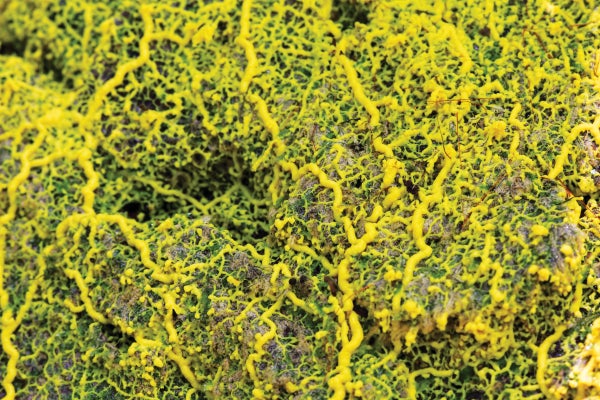Slime molds help map the universe’s dark matter
Pathfinding in single-celled organisms reveals connections in the universe’s vast ‘cosmic web’

Over billions of years, gravity has pulled the universe’s matter into a chaotic web of filaments, tendrils, and voids known as the cosmic web. Galaxies are scattered along these tendrils like beads on a string, which led astronomer Farhanul Hasan of New Mexico State University and his colleagues to wonder how the environment created by the filaments might affect the evolution of galaxies. “I like to call this the ecosystem of galaxies,” he says.
To find out, researchers needed to map out the cosmic web precisely over time, but the mix of gas, galaxies, and dark matter that makes up the web makes this task difficult: while the stars in galaxies are easy to see, the rest of the universe is not.
To connect the dots in their computer simulation of the universe, Hasan and his colleagues introduced a special “ally”: a type of humble slime mold. This single-celled organism is an expert at exploring the space around it. The mold’s membranes push outward in synchronized waves in all directions. When the mold finds a food source, it loosens the nearby membrane, allowing the subsequent push to send even more material to that area.
Supporting science journalism
If you enjoyed this article, please support our award-winning journalism. Subscribe. By purchasing a subscription, you help ensure a future of influential stories about the discoveries and ideas shaping the world today.
Scientists have used slime mold’s exploration abilities to solve mazes and logic puzzles, recreate transportation systems, and devise efficient computer algorithms. “It’s a really good mapping algorithm, because it’s not very sensitive to the direction you start with; it can explore everything at once,” says slime mold expert Simon Garnier of the New Jersey Institute of Technology.
Hasan and his team fed their slime-mold-based algorithm a set of galaxy locations as “food,” and had it map the connections across the simulated universe at different times. The slime-mold map created neater filament structures than any of the human-designed algorithms they tried. It was also sensitive to smaller features, allowing them to track dark matter more easily. The researchers found that neither the proximity nor the thickness of cosmic filaments seemed to affect galaxies in the early days, but that changed as the universe matured. Material pulled into the web eventually prevented star formation in galaxies that were too close.
“The crucial difficulty in using the cosmic web to constrain galaxy formation is describing it with the precision needed to observe the effect,” says astrophysicist Ali Muller of the New York City Institute of Technology. “With the use of the slime mold algorithm, that goal appears to have been achieved.”
The results of the study are: Astrophysical JournalBut that’s just the beginning. New surveys are extending their reach even further back in time. Conclusions drawn from the simulated universe can eventually be tested against older information about the web of the real universe, and the slime mold algorithm is poised to map it all.

